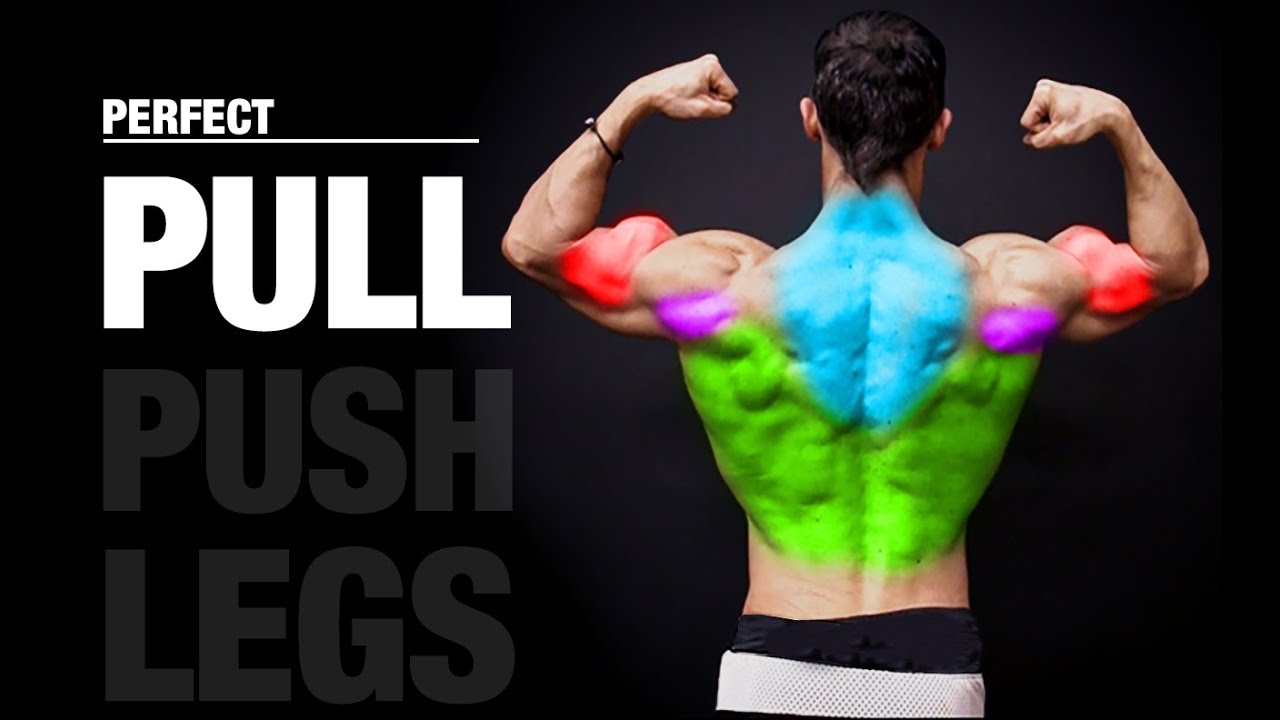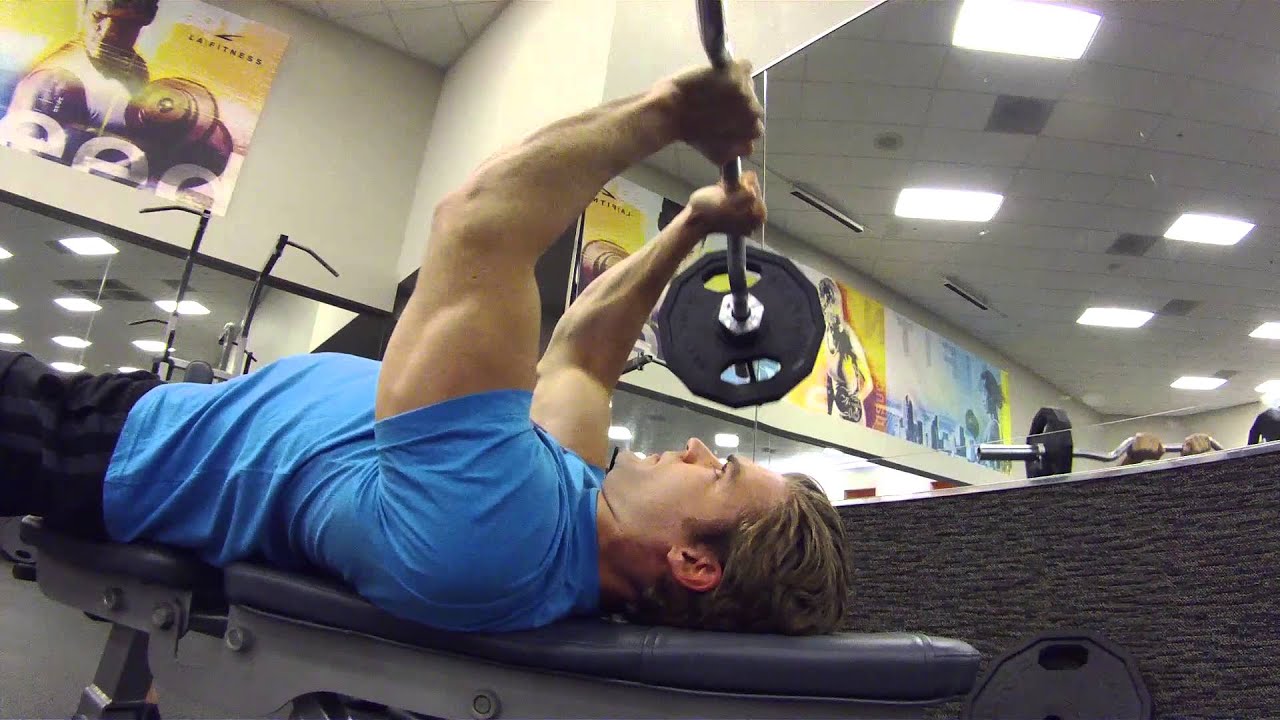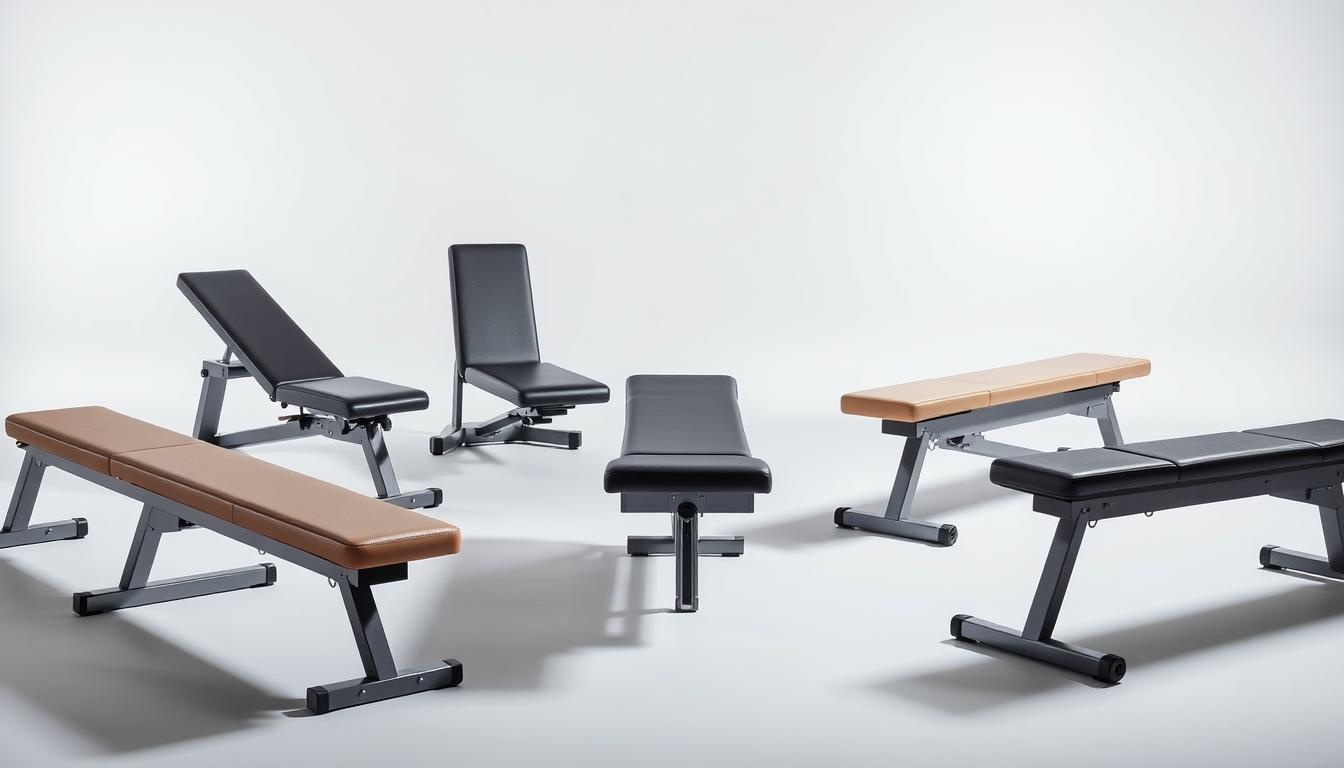10 Upper Body Exercises to Build Your Next Pull Day
When it comes to building a balanced upper body, a well-designed pull day is essential. While many fitness enthusiasts meticulously plan their chest and shoulder workouts, back and bicep training often becomes an afterthought—a random collection of exercises using whatever equipment happens to be available.
A proper pull day workout targets the muscles responsible for pulling movements: your back, biceps, and rear deltoids. By systematically training these muscle groups, you’ll develop better posture, create a more balanced physique, and build functional strength that carries over to everyday activities.
In this guide, we’ll explore 10 highly effective pull day exercises that will transform your back and biceps training. You’ll learn proper form, expert tips, and how to structure these movements into a cohesive workout that delivers serious results.
1. Pull-Ups

Primary Muscles: Latissimus Dorsi, Rhomboids, Biceps
The pull-up is one of the most effective compound exercises for developing a wide, powerful back. It’s an excellent movement to start your pull day with, as it engages multiple muscle groups simultaneously and allows for progressive overload as you get stronger.
How to Perform:
- Grip a pull-up bar with your palms facing away from you (pronated grip) and hands slightly wider than shoulder-width apart.
- Hang with your arms fully extended, keeping a slight bend in your elbows to maintain tension.
- Engage your core and pull your shoulder blades down and back.
- Pull your body upward by driving your elbows down until your chin clears the bar.
- Lower yourself with control until your arms are fully extended again.
Pro Tips:
- If you can’t perform full pull-ups yet, use an assisted pull-up machine or resistance bands for support.
- Try different grip widths to target different areas of your back—wider for more lat emphasis, narrower for more bicep engagement.
- Focus on pulling with your back muscles rather than your arms by imagining you’re pulling your elbows down to the floor.
Common Mistakes:
Avoid swinging your body or using momentum to get your chin over the bar. This reduces muscle activation and increases injury risk. Also, don’t forget to fully extend your arms at the bottom of each rep to maximize range of motion.
2. Barbell Rows

Primary Muscles: Latissimus Dorsi, Rhomboids, Traps, Biceps
Barbell rows are a fundamental pull exercise that allows you to move heavy weight and build serious back thickness. This compound movement targets multiple muscles simultaneously and is excellent for developing overall back strength.
How to Perform:
- Stand with your feet shoulder-width apart, holding a barbell with an overhand grip.
- Hinge at your hips until your torso is nearly parallel to the floor, keeping your back flat and knees slightly bent.
- Let the barbell hang with your arms fully extended, maintaining a neutral spine position.
- Pull the barbell toward your lower ribcage by driving your elbows back.
- Squeeze your shoulder blades together at the top of the movement.
- Lower the weight with control back to the starting position.
Pro Tips:
- Experiment with grip width—a wider grip emphasizes your upper back, while a narrower grip targets your lats more directly.
- Try an underhand grip (supinated) to increase bicep activation and create a different stimulus for your back muscles.
- Keep your core tight throughout the movement to protect your lower back.
Common Mistakes:
Avoid rounding your back, which can lead to injury. Don’t use momentum by jerking the weight up—focus on controlled movement. Many lifters also make the mistake of not pulling the bar high enough to fully engage the back muscles.
3. Lat Pulldowns

Primary Muscles: Latissimus Dorsi, Rhomboids, Biceps
The lat pulldown is an excellent alternative to pull-ups, especially for beginners or those looking to isolate their lats with more control. This machine-based exercise allows for precise weight selection and targeted muscle activation.
How to Perform:
- Sit at a lat pulldown machine with your feet flat on the floor and knees secured under the pads.
- Grasp the bar with a wide overhand grip, hands positioned wider than shoulder-width apart.
- Sit upright with a slight arch in your lower back and chest up.
- Pull the bar down to your upper chest by driving your elbows toward the floor.
- Squeeze your lats at the bottom of the movement.
- Slowly return the bar to the starting position with control, fully extending your arms.
Pro Tips:
- Try different attachments (V-bar, straight bar, rope) to target your back from various angles.
- Focus on pulling with your elbows rather than your hands to better engage your lats.
- Maintain a slight lean backward (about 10 degrees) to optimize lat engagement.
Common Mistakes:
Avoid pulling the bar behind your neck, which can strain your shoulders. Don’t lean too far back or use momentum to move the weight. Many people also make the mistake of not fully extending their arms at the top of each rep.
4. Seated Cable Rows

Primary Muscles: Middle Back, Lats, Rhomboids, Traps
Seated cable rows are a versatile pull exercise that targets the middle back while providing constant tension throughout the movement. The cable machine allows for smooth resistance and various handle attachments to target different areas of your back.
How to Perform:
- Sit at a cable row station with your feet on the platform and knees slightly bent.
- Grasp the handle with both hands and sit upright, maintaining a slight arch in your lower back.
- Pull the handle toward your lower abdomen by driving your elbows back.
- Squeeze your shoulder blades together at the end of the movement.
- Slowly extend your arms to return to the starting position.
Pro Tips:
- Use a V-bar attachment for a neutral grip that’s comfortable on the wrists and targets the middle back effectively.
- Try a wider grip attachment to emphasize upper back development.
- Maintain a consistent tempo—aim for a 2-second pull, 1-second squeeze, and 3-second return.
Common Mistakes:
Avoid excessive backward leaning or using momentum to move the weight. Don’t round your back during the movement. Many lifters also make the mistake of not fully extending their arms at the end of each rep, which limits range of motion.
5. Single-Arm Dumbbell Rows

Primary Muscles: Lats, Rhomboids, Traps, Rear Delts
Single-arm dumbbell rows allow you to focus on one side at a time, which helps identify and correct strength imbalances. This exercise also permits a greater range of motion than barbell rows and engages your core for stabilization.
How to Perform:
- Place your right knee and right hand on a bench, creating a stable base.
- Position your left foot flat on the floor for balance.
- Hold a dumbbell in your left hand with your arm fully extended.
- Keep your back flat and parallel to the floor.
- Pull the dumbbell up toward your hip by driving your elbow toward the ceiling.
- Squeeze your back muscles at the top of the movement.
- Lower the weight with control and repeat for the desired reps before switching sides.
Pro Tips:
- Focus on pulling with your back muscles rather than your arm by initiating the movement with your shoulder blade.
- Try the “elbow-out” variation (pulling more toward your shoulder) to target your upper back and rear delts more intensely.
- Experiment with a slight rotation at the top of the movement to increase lat engagement.
Common Mistakes:
Avoid twisting your torso or using momentum to lift the weight. Don’t let your shoulder hunch forward at the bottom of the movement. Many people also make the mistake of pulling too far back, which can strain the lower back.
6. Face Pulls

Primary Muscles: Rear Deltoids, Traps, Rhomboids
Face pulls are an excellent exercise for targeting the often-neglected rear deltoids and upper back muscles. They help improve posture and shoulder health while creating balanced shoulder development.
How to Perform:
- Set a cable pulley to slightly above head height and attach a rope handle.
- Grasp the rope with both hands, palms facing each other.
- Step back to create tension in the cable and stand with feet shoulder-width apart.
- Pull the rope toward your face, separating your hands as you pull and aiming for your forehead.
- Focus on pulling with your rear delts and upper back, keeping your elbows high.
- Squeeze your shoulder blades together at the end of the movement.
- Return to the starting position with control.
Pro Tips:
- Try external rotation at the end of the movement (rotating your hands outward) to engage the rotator cuff muscles.
- Keep your elbows at or above shoulder height throughout the movement for optimal rear delt activation.
- Use a lighter weight and focus on perfect form rather than moving heavy weight with poor technique.
Common Mistakes:
Avoid using too much weight, which leads to poor form and reduced rear delt activation. Don’t pull the rope toward your chest instead of your face. Many people also make the mistake of not fully retracting their shoulder blades at the end of the movement.
7. Chest-Supported Dumbbell Rows

Primary Muscles: Middle Back, Rhomboids, Traps
Chest-supported rows take stress off your lower back by providing stability through the bench. This allows you to focus purely on your upper back muscles without worrying about maintaining proper posture.
How to Perform:
- Set an adjustable bench to a 30-45 degree incline.
- Lie face down on the bench with your chest supported and feet on the floor.
- Hold a dumbbell in each hand with arms fully extended toward the floor.
- Pull the dumbbells up by driving your elbows toward the ceiling.
- Squeeze your shoulder blades together at the top of the movement.
- Lower the weights with control back to the starting position.
Pro Tips:
- Adjust the bench angle to target different areas of your back—a steeper incline hits the upper back more, while a flatter angle targets the mid-back.
- Try pulling the dumbbells to different positions (toward your hips, ribcage, or shoulders) to target different back muscles.
- Use a neutral grip (palms facing each other) to reduce wrist strain and engage the rhomboids more effectively.
Common Mistakes:
Avoid lifting your chest off the bench during the movement. Don’t use momentum by jerking the weights up. Many lifters also make the mistake of not fully extending their arms at the bottom of each rep, which limits range of motion.
8. Barbell Bicep Curls

Primary Muscles: Biceps Brachii, Brachialis
No pull day is complete without direct bicep work. The barbell curl is a classic exercise that allows you to lift heavier weights than dumbbell variations, making it excellent for overall bicep development.
How to Perform:
- Stand with feet shoulder-width apart, holding a barbell with an underhand grip at shoulder width.
- Keep your elbows close to your sides and your upper arms stationary.
- Curl the weight up by flexing at the elbows, keeping your back straight.
- Squeeze your biceps at the top of the movement.
- Lower the weight with control back to the starting position with arms fully extended.
Pro Tips:
- Try an EZ-curl bar if straight barbell curls cause wrist discomfort.
- Experiment with grip width—a wider grip targets the inner head of the biceps, while a narrower grip emphasizes the outer head.
- Focus on a controlled eccentric (lowering) phase for greater muscle growth.
Common Mistakes:
Avoid swinging your body to lift the weight. Don’t let your elbows drift forward during the movement. Many people also make the mistake of not fully extending their arms at the bottom of each rep, which limits bicep development.
9. Hammer Curls

Primary Muscles: Brachialis, Brachioradialis, Biceps Brachii
Hammer curls target the brachialis and brachioradialis muscles more than standard curls, creating fuller-looking arms. The neutral grip also places less stress on the wrists, making this an excellent variation for those with wrist issues.
How to Perform:
- Stand with feet shoulder-width apart, holding a dumbbell in each hand with a neutral grip (palms facing each other).
- Keep your elbows close to your sides and your upper arms stationary.
- Curl the weights up by flexing at the elbows, maintaining the neutral grip throughout.
- Squeeze your biceps and forearms at the top of the movement.
- Lower the weights with control back to the starting position.
Pro Tips:
- Try alternating arms for better focus on each side and to prevent compensating with your stronger arm.
- Experiment with cross-body hammer curls (curling toward the opposite shoulder) to increase brachialis activation.
- Use a slight forward lean to increase the challenge and engage your core.
Common Mistakes:
Avoid excessive wrist movement during the curl. Don’t use momentum by swinging the weights up. Many people also make the mistake of curling the weight too high, which can reduce tension on the target muscles.
10. Cable Pullovers

Primary Muscles: Latissimus Dorsi, Serratus Anterior
Cable pullovers provide constant tension throughout the movement, making them excellent for isolating and developing the lats. This exercise stretches the lats fully at the top position and contracts them powerfully as you pull the cable down.
How to Perform:
- Attach a rope handle to a high cable pulley.
- Stand facing away from the cable machine, feet shoulder-width apart.
- Grasp the rope with both hands and step forward to create tension.
- Start with your arms extended overhead, with a slight bend in the elbows.
- Keep your core tight and maintain a slight forward lean.
- Pull the rope down and back in an arcing motion until your hands reach your thighs.
- Slowly return to the starting position with control.
Pro Tips:
- Focus on initiating the movement with your lats rather than your arms.
- Try different attachments (straight bar, V-bar) for variety and to target the muscles from different angles.
- Maintain a slight bend in your elbows throughout the movement to keep tension on the lats and off the triceps.
Common Mistakes:
Avoid bending at the elbows too much, which turns the movement into a tricep pushdown. Don’t arch your lower back excessively. Many people also make the mistake of not fully extending their arms at the top of the movement, which limits the stretch on the lats.
Programming Your Pull Day Workout

Now that you’re familiar with these effective pull exercises, let’s discuss how to structure them into a cohesive workout. Here’s a framework to help you design your next pull day:
Set and Rep Ranges:
| Exercise Type | Sets | Reps | Rest Period |
| Compound Movements | 3-4 | 6-10 | 2-3 minutes |
| Isolation Exercises | 3 | 10-15 | 1-2 minutes |
| Finisher Movements | 2-3 | 15-20 | 30-60 seconds |
Workout Structure:
- Start with compound movements like pull-ups, barbell rows, or lat pulldowns that engage multiple muscle groups.
- Progress to targeted back exercises such as face pulls or chest-supported rows that focus on specific areas.
- Finish with bicep work like barbell curls and hammer curls after your back is already fatigued.
Effective Exercise Pairings:
Vertical Pull Superset:
- Pull-ups (3 sets of 8-10 reps)
- Face Pulls (3 sets of 12-15 reps)
- Rest 90 seconds between supersets
Horizontal Pull Superset:
- Barbell Rows (3 sets of 8-10 reps)
- Chest-Supported Rows (3 sets of 10-12 reps)
- Rest 90 seconds between supersets
Bicep Finisher:
- Barbell Curls (3 sets of 10-12 reps)
- Hammer Curls (3 sets of 12-15 reps)
- Minimal rest between exercises
Back Thickness Focus:
- Single-Arm Dumbbell Rows (3 sets of 8-10 reps per arm)
- Cable Pullovers (3 sets of 12-15 reps)
- Rest 60-90 seconds between exercises
Progressive Overload Tip: To continue making gains, aim to increase either weight, reps, or sets every 1-2 weeks. Track your workouts to ensure you’re consistently challenging yourself.
Ready to Transform Your Pull Day?
Download our free Pull Day Workout Template to organize your exercises, track your progress, and maximize your results. The template includes multiple workout variations, progression tracking, and form cues for each exercise.
Download Free Pull Day TemplateConclusion
A well-designed pull day is essential for building a balanced, powerful upper body. By incorporating these 10 exercises into your routine, you’ll develop a stronger back, more defined biceps, and improved posture. Remember to focus on proper form over heavy weight, especially when first learning these movements.
Start with the compound exercises that give you the most bang for your buck, then move to more targeted movements. Be consistent with your pull day workouts, progressively increase the challenge, and you’ll soon see impressive gains in both strength and muscle development.
Your back is the foundation of upper body strength—give it the attention it deserves with these effective pull day exercises.



